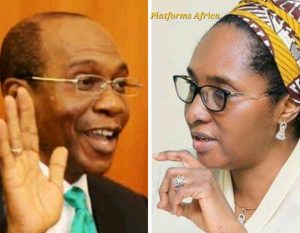By Favour Ajibade
President Muhammad Buhari has backed the decision by the Central Bank of Nigeria (CBN) to design new naira notes and remove the old ones, saying that the nation will gain a lot by doing so.
This is coming on the heels of the reactions by the Minister of Finance, Budget and National Planning, Mrs Zanaib Ahmed, that CBN has refused to carry her ministry along on the issue.
In a radio interview with Halilu Ahmed Getso, and Kamaluddeen Sani Shawai, President Buhari said reasons given to him by the CBN convinced him that the economy stood to benefit from reduction in inflation, currency counterfeiting and the excess cash in circulation.
Similarly, the Senior Special Assistant to the President, (Media & Publicity), Garba Shehu, quoted Buhari as saying that he did not consider the period of three months for the change to the new notes as being short.
”People with illicit money buried under the soil will have a challenge with this but workers, businesses with legitimate incomes will face no difficulties at all.”

However, CBN on Saturday insisted it will carry on with the redesign of some denominations of the Naira notes, saying it followed due process in its decision.
The apex bank made this known via its verified Twitter account on Saturday saying that the exercise was 12 years overdue.
The CBN urged Nigerians to support the measure, stressing that it was in the overall interest of the country.
The CBN said the measure was in line with provisions of sections 2 and 19 of the CBN Act.
“The management of the CBN had duly sought and obtained the approval of President Muhammadu Buhari in writing to redesign, produce, release and circulate new series of N200, N500 and N1,000 banknotes.

“The CBN urges Nigerians to support the currency redesign project, which is in the overall interest of every citizen of the country.
“The hoarding of significant sums of banknotes outside the vaults of commercial banks should be discouraged by anyone who means well for the country,” it said.
According to the CBN, it had tarried for too long considering that it had to wait 20 years to carry out a redesign.
“The standard practice globally was for central banks to redesign, produce and circulate new local legal tender every five to eight years,” it said.

Comments
Post a Comment